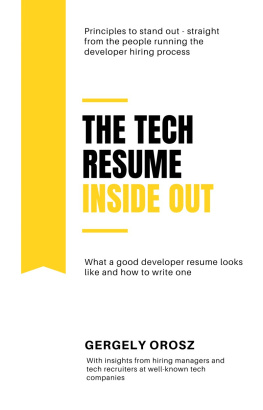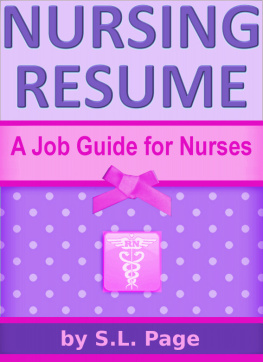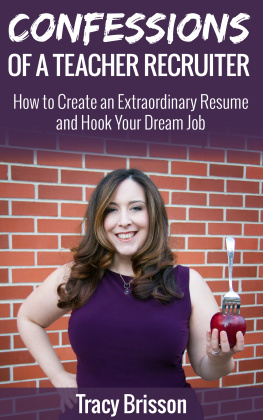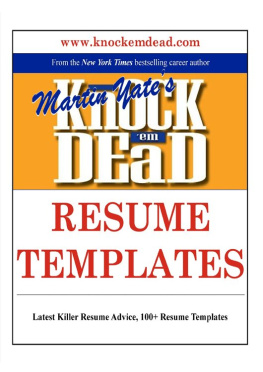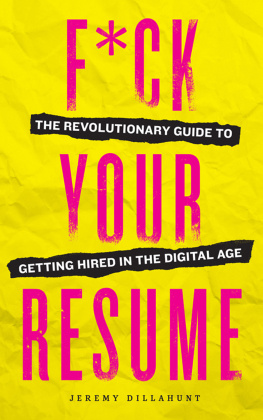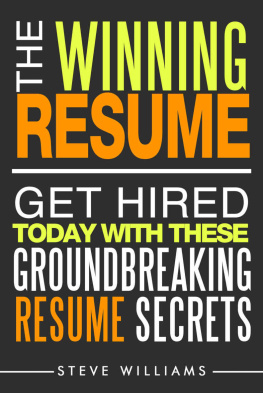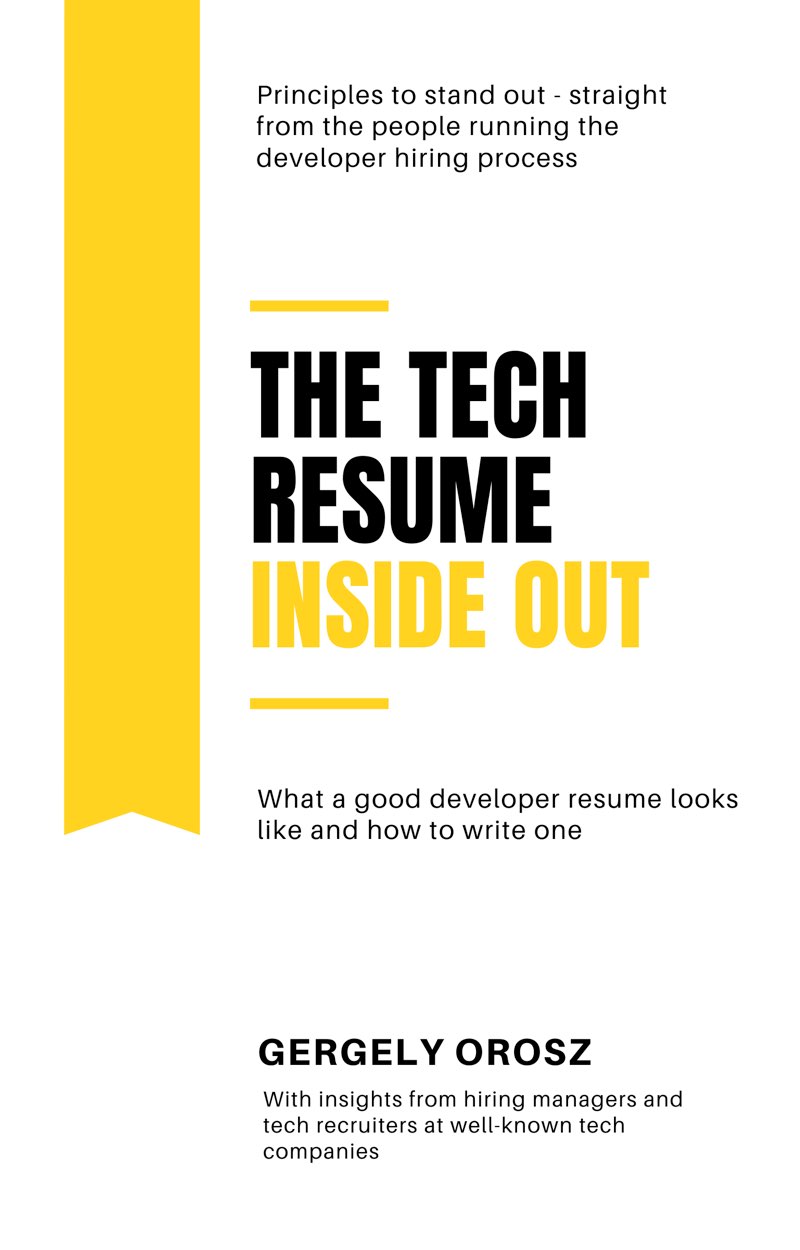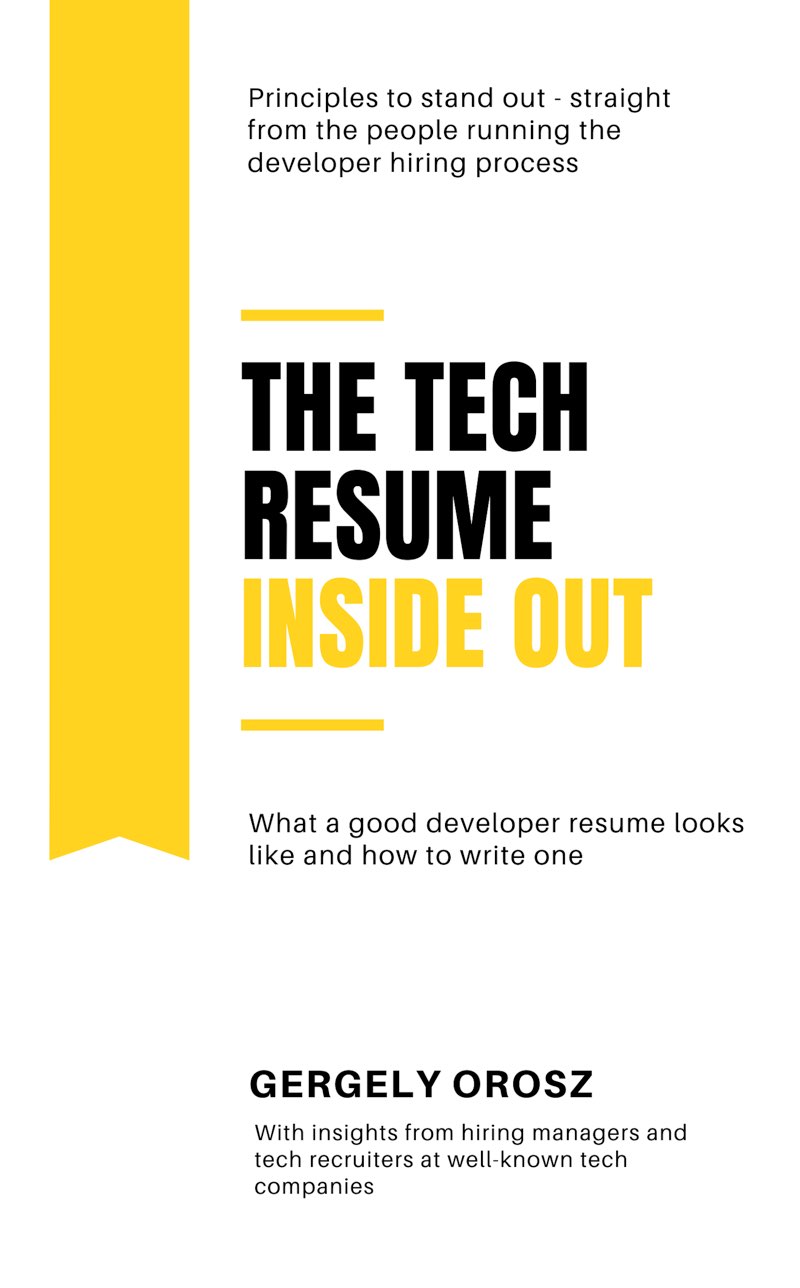Copyright 2020 by Gergely Orosz
All rights reserved.
No part of this book may be reproduced in any form or by any electronic or mechanical means, including information storage and retrieval systems, without written permission from the author, except for the use of brief quotations in a book review. or more information, please address: .
ISBN: 978-1-63649-416-6 (ebook)
FIRST EDITION, v1.0
www.TheTechResume.com
The Tech Resume Inside Out
Gergely Orosz
TheTechResume.COM
Acknowledgments
This book has been written with significant input from some of the best technical recruiters, engineering managers and engineers within my networkmany of them considered industry veterans. They were all generous with their time and feedback and made the book significantly better.
On the recruiting side, thank you to Amy Miller, Angelica Shah, Blake Stockman, Csudi Csudutov, Chukwuemeka Ugorji, Claire Taylor, Jos Marchena, Jorick Thijs Polderman, Keki Mwaba, Ken Liu, Konstanty Sliwowski, Sebastian Prieto Tovar, Sofi Djelassi, Victoria Farrelly, Veronika Nagy, and Yinka Coker. All of you have scanned more developer resumes than myself, and your insights and feedback helped make the book more accurate and helpful.
I am grateful for the feedback from engineering managers and engineers James Stanier, Jordan Bonnet, Manan Patel, Matt Dickenson, Monica Lent, Neville Kuyt, Pat Kua, Randall Kanna, Rodrigo Pimentel, Stuart Davidson, and Steve Ball. Thank you for both the reviews, the corrections and for confirming where you also would give similar advice.
The feedback and encouragement from the early beta book readers has been great. People who have helped with feedback and suggestions include Aleph Melo, Anmol Singh Jaggi, Christopher Paika, David Kiss, Fabien Townsend, Jamie Robertson, Maroof Haque, Munasir Priom, Oliver Mensah, Patrick Doyle, Simon Van de Water and Waseef Akhtar. Thank you! I made several improvements in the booksuch as adding Recap sections at the end of many chaptersafter these reader suggestions.
Id like to give special thanks to the books editor, Mike Reeves-McMillan, who worked with me from the other side of the world to create something that people will find pleasant to read.
Introduction
Theres a myth of it being easy to get a job as a developer. While there are times where this might be trueespecially if you are a senior or staff software engineer working at a well-known tech companythis is not the case for most developers. As soon as you get out on the job market and start directly applying for jobs, the feeling of having it easy quickly disappears.
This book will help you craft a developer resume that represents you fairly, plays to your strengths, and increases your chances of getting to that recruiter call.
Who This Book is For
This book is tailored for people applying for developer jobs with tech companies where the language used for business is English. The book is especially relevant for companies with US headquarters: well-known tech companies like Facebook, Amazon, Apple, Netflix, Google (also referred to as FAANG), unicorns like Stripe, Uber, Airbnb, Dropbox, and fast-growing tech startups. The principles of the guide likely translate to other companies. However, different industries and different companies might follow different processes and look for different things in a resume.
The book is written for software developers, tech leads and engineering managers. Most of the content is tailored from new grads, all the way to experienced software developers, with dedicated sections for leads and engineering managers. The book assumes that you already have the relevant experience for the positions you are applying for.
Everything presented in this guide is opinions that might or might not apply to the country and industry you are applying in, or the company you are applying to. Make sure to do your own research and get feedback from your network to tailor your resume or CV. There is no one-size-fits-all approach.
What This Book is Not
This book is not a definite guide on what works, and what doesnt, when applying for any specific company. Though the author and contributing authors have worked at a variety of tech companies, this does not make it an official guide for any of the companies mentioned in the book.
This goes back to how hiring works. As well cover in , hiring is a process that can differ not only per company, but also per hiring manager. Also, the likelihood of you receiving a follow-up call after applying for a position is dependent on many other factors that are impossible to predict. These include how many other qualified applications there are, what the timeline to fill the position is, how many open positions there are, and many others.
Software engineers realize that there are no one-size-fits-all solutions on what language to use to build a website, or what architecture to follow when designing a complex application. In a similar way, there is no one-size-fits-all resume template that will yield the best results, or resume contents that will always result in a recruiter call.
The book will not be able to answer why you dont hear back from companies you apply to. However, it does give context on how the process works, and advice that should help you navigate the resume writing process better, and with more structure and confidence.
FAANG: Facebook, Apple, Amazon, Netflix, Google. FAANG companies are known for the impressive stock growth they have shown in recent years. Engineers working at these companies receive hefty equity compensation on top of base salaries, making them some of the most attractive companies to work atand the most competitive to get into.
Part I
Resumes and the Hiring Process
Before jumping into the specifics on how to write a good developer resume, we need to take a pause. Why do you need to write a resume? What does a good developer resume look like, anyway? And why not just use your LinkedIn profile?
Once you submit a resume, what will happen to it? Will a recruiter look at it? Or a hiring manager? Or someone elseperhaps an automated process making a decision?
This part shares the context that recruiters and hiring managers would call trivial. However, if you are not a technical recruiter or a hiring manager, much of the details in this part will be eye-opening. Like what hiring managers see as good resumes, or what happens to your resume behind the scene.
In , we discuss what the goal of a resume really is. Spoiler its not to showcase all of your past experience. We cover what a good resume is like, and why LinkedIn might not be sufficient to get a job when you directly apply.
In , we share the bigger picture of how the interview process looksso you can better understand why resumes are important.
In , we reflect how COVID-19 has changed the job market, and what this means from new grads to experienced engineers. This chapter of the book is very much specific to the 2020 COVID-situation and as the world gets back to a new normal, the contents of this section might become less relevant.

